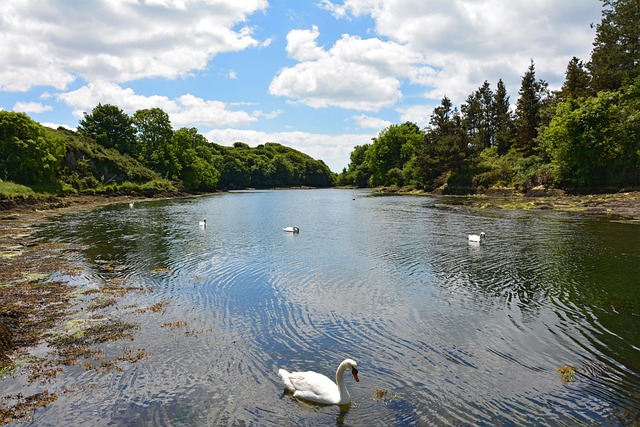Agriculture and tourism have merged into a powerful economic synergy, where agritourism benefits both industries. By opening their farms to tourists, farmers create unique attractions, enhance property values, and contribute to local economies. Tourists gain authentic experiences in lush agricultural settings while promoting sustainable practices. This model, proven successful globally, offers rural communities diversified income streams, conservation efforts, and environmental stewardship, making it a promising strategy for real estate growth and community prosperity.
In today’s world, the convergence of agriculture and tourism creates a dynamic economic model, offering sustainable solutions for both sectors. This article explores how farming communities are diversifying their income through eco-tourism, leveraging tribal knowledge and cultural heritage to attract visitors. We delve into real estate implications, focusing on strategies that balance tourist accommodations with preserving rural landscapes, ensuring harmonious development while respecting the natural tapestry of agricultural lands. Discover successful case studies and innovative approaches that integrate tourism infrastructure seamlessly into the fabric of rural communities.
The Convergence of Agriculture and Tourism: A New Economic Model

In recent years, there’s been a remarkable convergence between agriculture and tourism, creating a novel economic model that empowers both sectors to thrive. As travelers seek authentic experiences, they’re drawn to destinations offering lush landscapes and vibrant agricultural communities, transforming traditional farming practices into unique attractions. This shift has encouraged farmers to open their doors, literally and metaphorically, by offering visitors opportunities to engage in sustainable farming methods, harvest their own produce, and immerse themselves in the rich cultural heritage tied to the land.
This integration goes beyond mere attraction; it fosters a mutually beneficial relationship. Tourists contribute to local economies by providing income streams for farmers through agritourism initiatives. Simultaneously, agriculture benefits from tourism’s promotional power, showcasing sustainable farming practices and enhancing the value of real estate assets tied to these vibrant, thriving agricultural communities. This synergy creates a dynamic environment where the pursuit of sustainable living and appreciation for nature intertwine, shaping the future of both industries.
– Exploring the benefits of combining agricultural practices with eco-tourism.

Combining agricultural practices with eco-tourism offers a sustainable and mutually beneficial approach for communities, especially those in rural or indigenous areas. By integrating eco-friendly farming methods, local farmers can produce high-quality organic products while preserving the natural environment that attracts tourists. This dual focus not only ensures the conservation of precious ecosystems but also provides an opportunity to diversify income streams for agricultural communities.
In terms of real estate, this mix can transform landscapes into vibrant destinations. Eco-tourism attractions, such as agritourism farms or nature reserves, can increase property values and create new investment opportunities. It encourages a harmonious relationship between business development and environmental stewardship, ensuring that natural resources are protected while local economies thrive.
– Case studies of successful farming communities that have embraced tourism as a supplementary income source.

In many parts of the world, farming communities have successfully diversified their economies by embracing tourism as a supplementary income source. Case studies from regions like the Scottish Highlands and rural Greece demonstrate how agricultural landscapes can be leveraged to create unique tourist experiences. In these areas, local farmers have transformed their farms into bed-and-breakfasts, offering visitors a chance to immerse themselves in the countryside. This strategy not only generates additional revenue but also promotes conservation efforts by ensuring the longevity of agricultural lands and traditions.
These farming communities have effectively utilized their natural surroundings and cultural heritage to attract tourists interested in authentic experiences. By integrating tourism with agriculture, they’ve created sustainable models where visitors can participate in farm activities, enjoy locally sourced cuisine, and immerse themselves in traditional practices. This mix of real estate, agriculture, and tourism has led to the preservation of scenic landscapes and the preservation of indigenous knowledge, ensuring a harmonious coexistence between economic prosperity and environmental stewardship.






